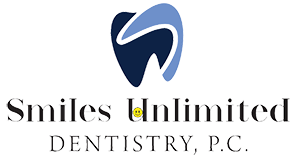Teeth are a crucial part of our lives. Not only does a smile help make a first impression, but teeth are also vital for communication – spoken and unspoken! And although the majority of people brush their teeth twice a day and braces are commonplace in our society, most people actually know very little about teeth.
There are four different types of teeth:
-The teeth at the front of your mouth are incisors and beyond helping your smile look nice, they also allow you to cut into foods.
-Canines are the pointy teeth (most commonly known as eyeteeth or fangs) that are used to tear food.
-Premolars (or bicuspids) are teeth behind the canines. They have two cusps that are used to tear and crush food.
-Molars are the largest teeth located in the back of the mouth. Molars have multiple cusps and are used to grind food.
What makes teeth unique is that they are made of enamel – the hardest substance in the human body. Despite this, acids produced by bacteria and acids from soft drinks can easily erode enamel. The part of the tooth that is above the gum line is made of enamel and is called the crown. Underneath the visible part of the tooth is a layer called dentin. It isn’t as hard as enamel, but this is actually a good thing. The softer nature of dentin allows the tooth to slightly flex when force is applied. If the tooth were only comprised of enamel it would simply crack because it couldn’t bend. The innermost layer of the tooth is called the pulp. This part of the tooth has no bone and its function is to allow blood flow to the rest of the tooth and provide an area for the nerves in the tooth.
The gingiva (gums) surrounds teeth and protects the bone that is underneath it. Beneath the gums teeth are integrated into the jaw through roots, ligaments and bone. The root is the anchor of the tooth. It is usually hidden beneath the gum tissue (unless there is periodontal disease). The part of the root that connects the periodontal ligament is known as the cementum. And although they aren’t commonly talked about, the periodontal ligaments play a key role in integrating the tooth to the rest of the jaw. The periodontal ligament connects the tooth to bone in the jaw and activates the reflex to open your mouth when too much pressure is applied on the teeth.
Your teeth are exposed to all kinds of forces from food to the stress of everyday life. If you have issues or questions about the health of your teeth, please contact us at Smiles Unlimited Dentistry, P.C.!
